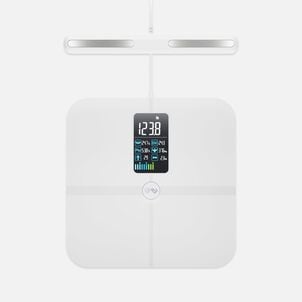While many people know about the "use-it-or-lose-it" rule when it comes to a flexible spending account (FSA), many employers are increasingly instituting a safeguard to help their employees budget each plan year: the FSA rollover.
So what is it and where can you sign up? Well it's a little more complicated than that. Let's dive in to explain how this handy account provision works and how you can budget around it to maximize the potential of your FSA dollars.
What is the FSA rollover?
Also known as the "FSA carryover," this provision was introduced in 2014 by the Internal Revenue Service (IRS) to give FSA users additional flexibility in managing their funds with plan-year forfeiture deadlines. When setting up an FSA plan, employers can choose to implement either the FSA carryover or an FSA Grace Period (which gives FSA users 2.5 months after their plan year ends to spend their remaining funds). Employers are not obligated to offer either feature, but if they do they cannot offer both features under the same plan. So whether you are starting a new job, or have been with yours for quite some time, be sure to ask your HR department to find out if these types of deadline extensions are in place with your plan.
Now here's the big change to keep in mind: when the FSA rollover was created back in 2014, the IRS would only allow up to $500 to be rolled over into the next year's plan allocation. But in a big change for 2020, the IRS increased the threshold for the rollover to $550, to be adjusted for inflation on an annual basis. (For plan years starting on January 1, 2024 or later, account-holders can now rollover $640 into the next plan year). That may not seem like a lot, but it's a new degree of flexibility that account holders can take advantage of whether they are worried about forfeiting their last few dollars or budgeting for a big-ticket medical service down the road.
Now that we know what the FSA rollover is, let's explore how you can best take advantage of it with these tips:
1. FSA rollovers don't count against your yearly contribution limit
This is probably the biggest piece of information to keep in mind when you're planning your budget around your FSA rollover. FSA contribution limits for 2024 have increased to $3,200. The maximum rollover for plan years ending in 2023 was $610. If your employer offered the FSA rollover, you could have added $610 of your 2023 funds to your 2024 contribution, which would give you $3,814 to spend in 2024. And remember, your FSA contribution is available in full from the beginning of your plan year, so if you're planning on covering the cost of a bigger medical procedure like LASIK, you'll have your full contribution to work with as you make your decision.
2. Carryovers make it easier to plan for unexpected expenses
One tip that we always recommend to FSA users, whether they have the FSA carryover or not, is to give yourself enough of a cushion in your yearly contribution to handle sudden medical emergencies and illnesses that may come up. After all, if for some reason you have to visit a specialist or have medical tests done, being able to cover part or all of that extra expense should be factored into your yearly contribution. Of course, if you stay happy and healthy all year long, that could leave you with extra money to spend at your plan year deadlines.
FSA carryovers provide a measure of relief for FSA users when preparing for the worst. As long as they spend their FSA dollars down to the $610 threshold, they can ensure that they won't forfeit funds at the end of their plan years and have a reserve to cover unexpected medical expenses if they happen.
3. FSA rollovers and HSA compatibility
Finally, if you're interested in making the switch to an HSA in the near future and you're currently enrolled in an FSA with a rollover, there is an important piece of information to keep in mind.
Without an HSA-compatible FSA, you’ll forfeit the remaining balance in your Healthcare FSA.
In other words, if you're planning on switching to an HSA in the future, you can't be enrolled in a general healthcare FSA and an HSA at the same time. You'd have to switch to a limited purpose FSA (which is used to pay vision and dental expenses only, and is HSA-compatible) to rollover that money into in order to contribute to an HSA. Because this money bridges multiple plan years, it's an important factor in determining your eligibility for other types of tax-advantaged healthcare accounts like an HSA. Be sure to check with your employer and plan administrator. So factor this into your long-term benefits planning if you think an account switch may be on the horizon.
If you have an FSA rollover, be sure to give your employer a big "thank you!" You have a lot more freedom to take advantage of your FSA funds to reduce your tax burden, treat medical conditions as they arise and help support your long-term health for the future.
—
Thank you for visiting the FSA Store Learning Center. Don’t forget to follow us for more helpful tips on Facebook, Instagram, and Twitter.

















